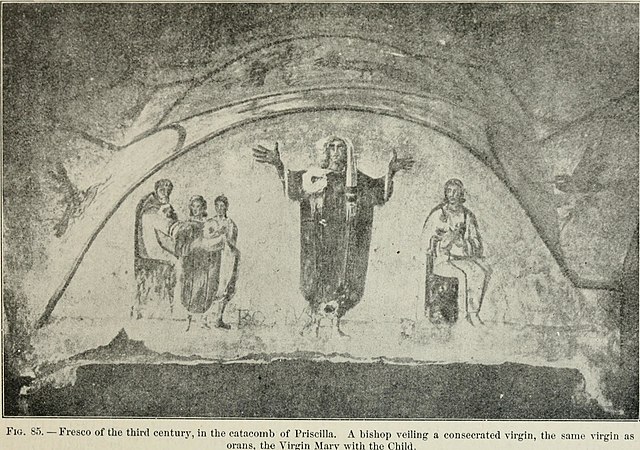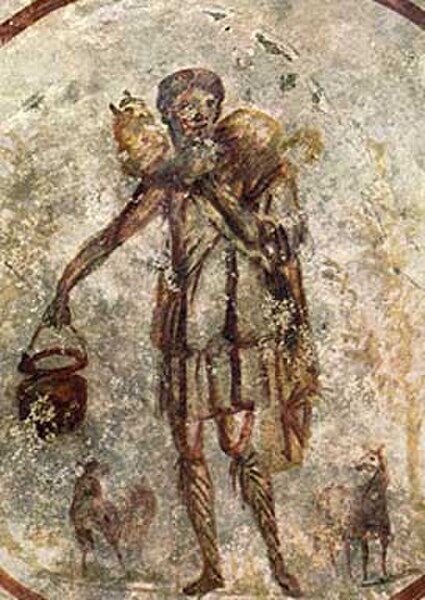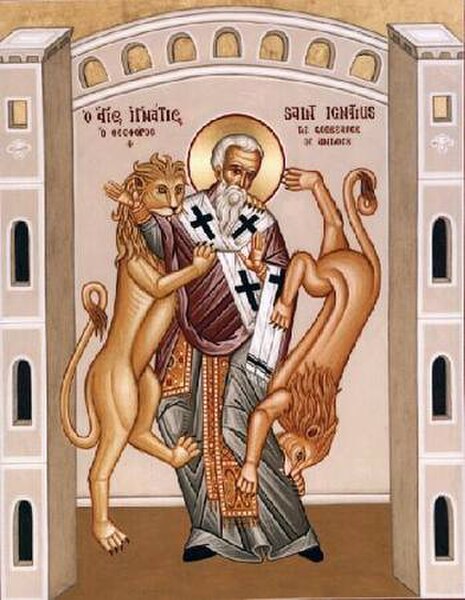The Didache, also known as The Lord's Teaching Through the Twelve Apostles to the Nations, is a brief anonymous early Christian treatise written in Koine Greek, dated by modern scholars to the first or second century AD.
Article about the rediscovery of the Didache, Chicago Daily Tribune, 1884
Philotheos Bryennios, who re-discovered the Didache
Revelation 22:17 (KJV), to which the prayer in Didache 10 bears some similarity.
Christianity in the ante-Nicene period
Christianity in the ante-Nicene period was the time in Christian history up to the First Council of Nicaea. This article covers the period following the Apostolic Age of the first century, c. 100 AD, to Nicaea in 325 AD.
Funerary stele of Licinia Amias on marble, in the National Roman Museum. One of the earliest Christian inscriptions found, it comes from the early third-century Vatican necropolis area in Rome. Upper tier: dedication to the Dis Manibus and Christian motto in Greek letters ΙΧΘΥϹ ΖΩΝΤΩΝ (Ikhthus zōntōn, "fish of the living", a predecessor of the Ichthys symbol); middle tier: depiction of fish and an anchor; lower tier: Latin inscription of the identity of the deceased
Fresco showing a woman wearing a headcovering praying in the gesture of orans (3rd century)
Christ Jesus, the Good Shepherd, third century.
Ignatius of Antioch, one of the Apostolic Fathers and the third Bishop of Antioch, was considered a student of John the Apostle. En route to his martyrdom in Rome (c. 108), Ignatius wrote a series of preserved letters which are examples of late-1st to early-second-century Christian theology.







